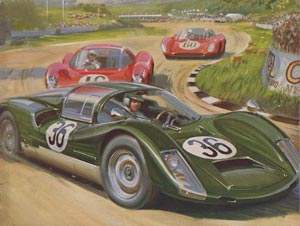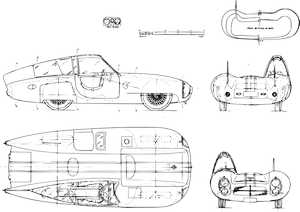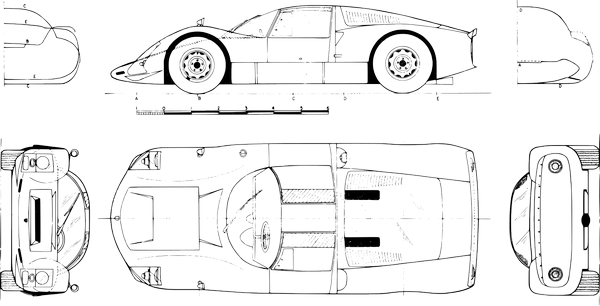Prototype Parade No. 57 | Model Maker May 1954 | Drawn & Described by Cristian Tayard
Pegaso Competition Special
S PAIN boasts but a single firm of car manufacturers, the large and well established "Empresa Nacional de Autocamiones S.A.". This company is mainly concerned with the production of utility vehicles but in recent years has turned its attention to the development of a series of luxury cars and sports roadsters under the name of "Pegaso", one specimen of which was shown to English motorists at the last Earl's Court Exhibition.
This latest production, dating back to 1951, is the Pegaso Type 102 Saloon of 2½ litre capacity, from which has been developed a 2.8 litre saloon and a sports coupe of 2½ litre. Alternative bodywork includes sports tourer and "Saoutchik". This last curiously named style was entirely conceived and carried out by members of the "Sociedad de Tecinos de Automocion" (hence the name!). The asymmetrical competition special which forms the subject of our plan this month was designed by Senor Wilfredo P. Ricart, Director General of the society, assisted by his son, also a qualified engineer. Its general lines are admittedly developed from the twin fuselage car with which the Italian Taruffi amassed a number of low capacity class records, but it enjoys a certain original style of its own, and is the only sports racer to have adopted this layout of recent years.
The driver's cockpit is carried over to the extreme right, and enclosed very like an aircraft. On the left the passenger's seat is completely covered in —this place, in practice, is not occupied anyway. The cockpit extends behind the driver to terminate in a fin, which is balanced by a similar fin on the passenger's side. Lights are encased all round by a large airscoop which follows "shark's mouth" lines. This asymmetrical design permits a considerable reduction in the cross-sectional area as against a car of normal layout, though the driver is somewhat restricted for elbow room. To give hint adequate space for dicing, it will be noted that an opening has been cut in the door.
The car is finished in a light saffron yellow, with a wide red band going across the bonnet and longitudinally from front to back. Furniture, headlight rims, wheel rims and spokes, and exhausts are all chromed. Leather upholstery is finished in natural colour. instrument panel is polished mahogany, with instruments in black.
The 2.8 litre engine fitted is basically the standard Pegaso 90° V-8 fourstroke with maximum r.p.m. of approximately 6,300. Speed in the neighbourhood of 150 m.p.h. is claimed for it, and the Spanish driver Celso Fernandez has been timed over the flying kilometre on the Barcelona-Ribas road at just over 142 m.p.h. Main dimensions are as follows: Length over all 14 ft. 8¾ in., width over all 6 ft. 2 in., wheelbase 7 ft. 8 in., front track 52 in., rear track 51 in., height 51 in., ground clearance 6 in. All up weight varies between 17¾ cwt. and 19 cwt. There are five forward speeds and reverse, while turning circle is 29½ ft.
Four carburettors provide fuel, and consumption is estimated to be 24 m.p.g. at 60 m.p.h., and 19 m.p.g. at 80 m.p.h.
Suspension is by independent torsion bar, while brakes and shock absorbers are hydraulic.












